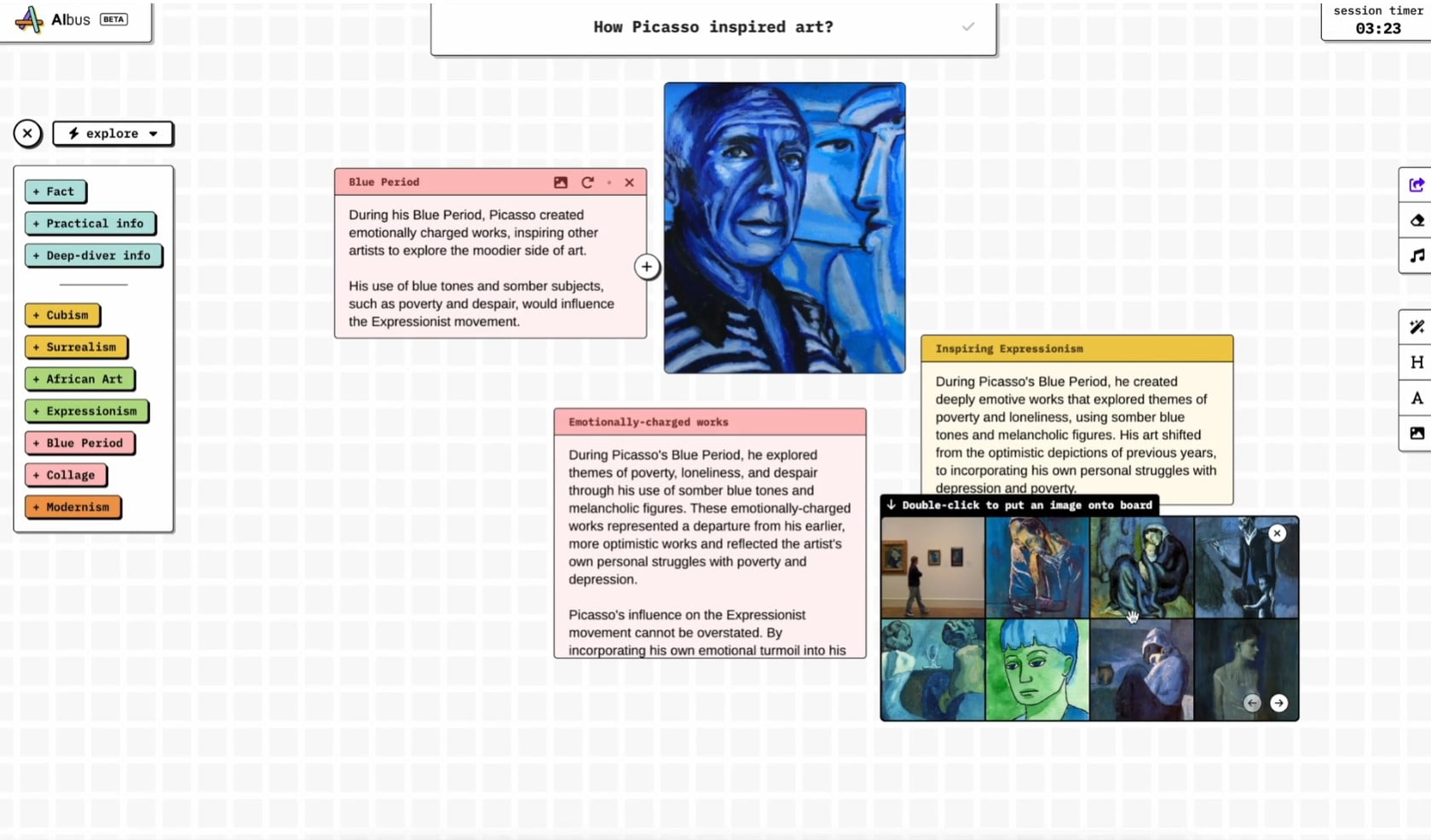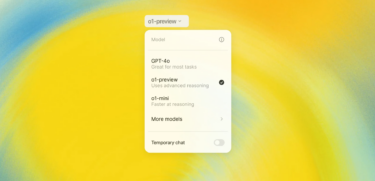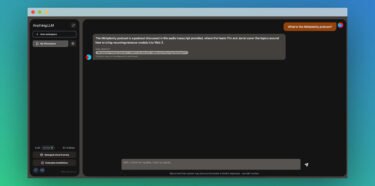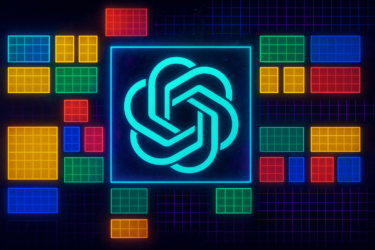Albus combines your exploratory interest with ChatGPT's explanatory power and graphical interfaces' visual possibilities.
Chatbots like ChatGPT are used in many fields, from journalism and creative writing to coding and search. But they can also be used for learning and exploring new topics.
Albus takes this capability of OpenAI language models and makes it even more accessible through a graphical interface and automatically generated prompt suggestions.
Albus makes topic suggestions and searches for images
In your workspace, you can enter a topic at the top of Albus and after a short loading time, initial choices will appear on the left, including prompts that provide a brief or detailed explanation of the topic, or those that directly explain important elements and concepts of the topic.
Each click opens a separate box into which the language model inserts an explanation, and each box can be further queried using suggested prompts. With a further click, suitable images can be found and integrated via the image search.
In just a few minutes you can create a large workspace on your topic with detailed explanations, short summaries, definitions of terms, and more.
Albus helps with teaching and learning
In addition to the explorative function, Albus also offers the possibility of selecting a learning or teaching model. In this case, the suggestions change and, for example, flashcards or multiple choice questions can be generated, an introductory question on a topic can be formulated and the level of the target group can be selected.
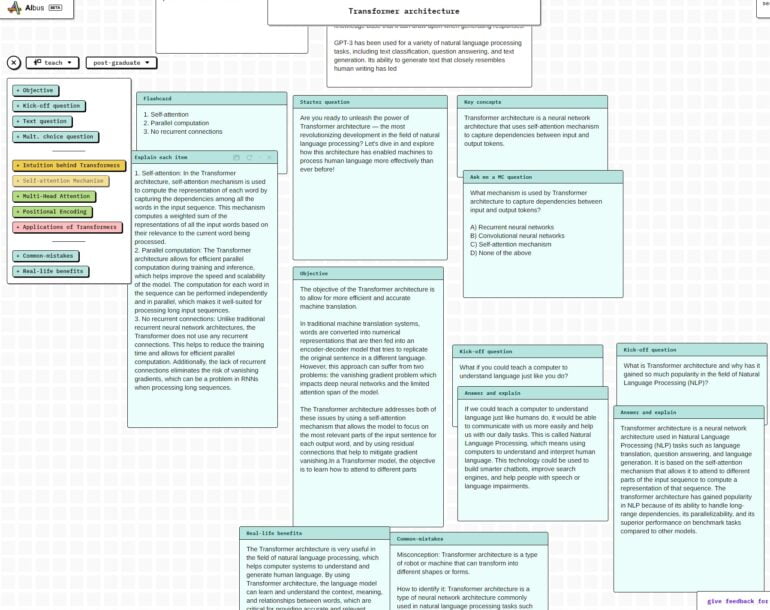
You can also use the Smart Text feature to ask your own questions, which will be answered by the AI system. You can also share your Albus boards and decide which parts are visible.
Albus is currently available for free in a beta version after registration.
